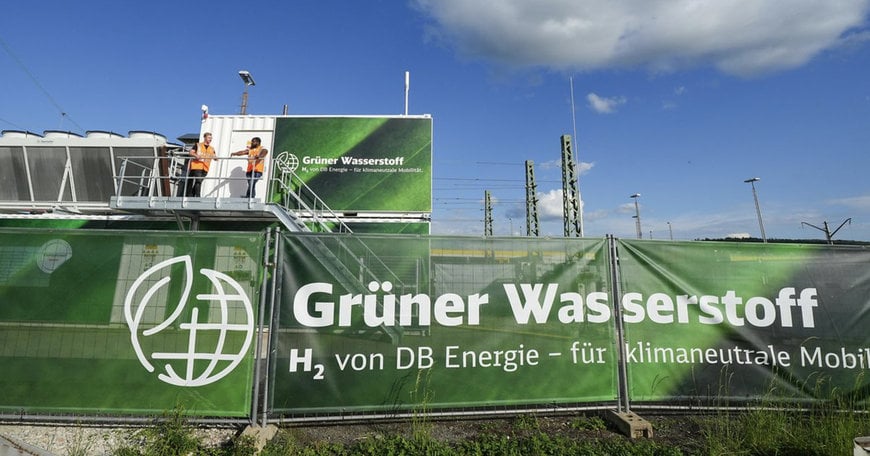railway-international.com
22
'24
Written on Modified on
DEUTSCHE BAHN IS TESTING NEW TECHNOLOGIES FOR GREEN TRACTION POWER SUPPLY
For the first time in Germany, DB is linking overhead lines with a hydrogen production system and battery storage.
www.deutschebahn.com

Deutsche Bahn (DB) is continuing to advance the energy transition as part of the Group's Strong Rail strategy: In Tübingen, the Group subsidiary DB Energie has put an innovation hub into operation in which it is testing new technologies for sustainable energy supply by rail. The focus is on a new technical interface to the overhead line, which in the future will enable, among other things, the direct feeding of renewable energy into the traction power network. The aim is to test green energy supply solutions for the traction power supply of the future, which will change fundamentally with the feed-in of renewable energies.
The system at the Tübingen site consists of six different components: At the center is a so-called sector coupler, which DB helped develop for this project. It forms the interface to the overhead line and connects it to a hydrogen generation plant and a battery storage system. The sector coupler is already being used in Tübingen in a project in which DB is producing green hydrogen for the first time to supply hydrogen trains.
Deutsche Bahn is a pioneer in climate protection and will be climate-neutral by 2040. The share of renewable energies in the DB traction current mix is already 68 percent. By 2038, all DB traction current will be 100 percent green, with an interim target of 80 percent green electricity by 2030. Since 2018, our long-distance passengers on ICE, IC and EC trains within Germany have been traveling with 100 percent green electricity.
As a network operator, DB Energie manages the 8,000-kilometer-long railway power network and supplies around 20,000 trains with electrical energy every day. There are currently a few feed-in points in the railway power network: some large power plants supply stable amounts of fossil traction power regardless of the weather. With the further expansion of renewables, the railway power network will change fundamentally: many smaller feed-in points will feed fluctuating, smaller amounts of green electricity into the network.
Compared to large converter and inverter plants that feed from the upstream 50 Hz network into the 16.7 Hz traction power network, sector couplers can feed locally generated green electricity, for example from wind or solar power plants, directly into the overhead line. This saves capacity in the network, as the electricity is fed in where it is consumed and does not have to be transported over long distances. In addition, sector couplers can be used in the future as an interface between the overhead line and storage technologies, such as battery or hydrogen storage. Stored green electricity can then be fed into the traction power network when required. This means that DB Energie can react flexibly to network fluctuations even with the further expansion of renewables. In Tübingen, DB Energie uses an innovative second-life battery storage system from DB's internal start-up encore | DB, which consists of 108 reconditioned batteries from electric vehicles.
www.deutschebahn.com

